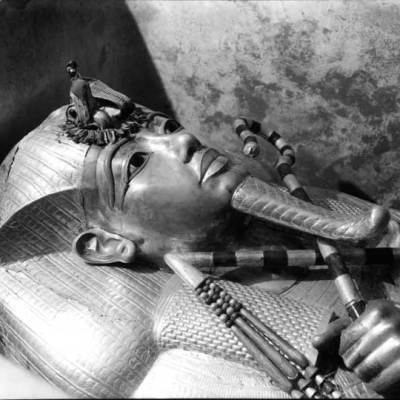
The spaces that have historically been available for displaying art have always helped to determine what artists have made. In art-historical terms, this is something of a truism: the structural innovations of northern Gothic architecture stimulated the great medieval adventures in stained glass; the wooden ceilings of Venetian buildings, together with the damp climate of the lagoon, jump-started a preference for oils over fresco painting there during the Renaissance; the grand public demands of the 17th-century Roman palazzo contributed to the bombast of baroque art.
It is more difficult to disentangle how such architectural forces shape the art being produced today, if only because it is even harder to achieve an objective view of the world we inhabit than of a culture we can scrutinise from a remove. But the artist and critic Brian O’Doherty did something of the sort in the 1970s, when he wrote of how far both the creation and canonisation of modern art had been informed by the dominant ‘white cube’ model of gallery space, which had conferred a monumental aura on much large-scale abstract painting. In Europe and the US, this pristine, ostensibly neutral space is still archetypal in both commercial and institutional contexts – even if a cube now sounds too diminutive to describe many of today’s whitewashed hangars.
O’Doherty’s premise is the starting point for Niru Ratnam’s article in this issue on the rapid rise of art biennials in Asia. In a region that lacks a strong museum culture (and its attendant infrastructural role in displaying and promoting new art), such events have become the stages on which contemporary works are debated, criticised and endorsed. The temporary or appropriated display spaces of many biennials have not, on the whole, embraced the type of art that flaunts itself so well in the white cube. Instead, they have helped forge a field of ‘Asian contemporary art’ that favours process-driven, conceptual art and work in a range of new media.
Visiting Hong Kong for the first time this year, I was struck by how often conversations turned to the lack of exhibition space in the local region, and how it hampers efforts to foster a cultural sector to match its historic trade in art and antiques. Even commercial gallerists I talked to spoke of how architecture sometimes constrains the type of contemporary art that they’re able to display. This is not simply a case of very high rents, but also involves more practical limitations, such as low ceilings and restricted access for large objects. M+, a new ‘museum for visual culture’, will provide much-needed display space for modern and contemporary art when its new Herzog & de Meuron building opens in 2018. Those involved hope it will become an iconic structure, a huge screen-shaped building on the West Kowloon waterfront to contrast the high-rise cluster behind it.
For now, one architectural curiosity that strikes me in Hong Kong is how many of the vestiges of colonial-era architecture have been adapted for commercial or public exhibition. With its comparatively lofty ceilings, the neoclassical Pedder Building (erected by Palmer and Turner Architects in 1924) now hosts international blue-chip galleries, while the former Police Married Quarters on Hollywood Road has been reinvented as a centre promoting local designers.
But far finer than either of these is the Asia Society Hong Kong Center, a complex of buildings that integrates a former British army munitions compound with a new pavilion, suspended walkway, and terraces designed by Tod Williams Billie Tsien Architects. Perched in the rainforest above the Admiralty district, it is a rare, elegant interloper in an urban environment dominated by some undeniably brash skyscrapers. The well-appointed galleries here are in the restored ‘Magazine A’ building, a sturdy construction from the 1860s that was designed to contain accidental explosions.
When I visited, these galleries contained a superb exhibition of recent work by the Chinese-born artist Xu Bing, who is interviewed by Marina Cashdan in these pages. It seemed utterly appropriate, given the surroundings, that its theme was metamorphosis.
